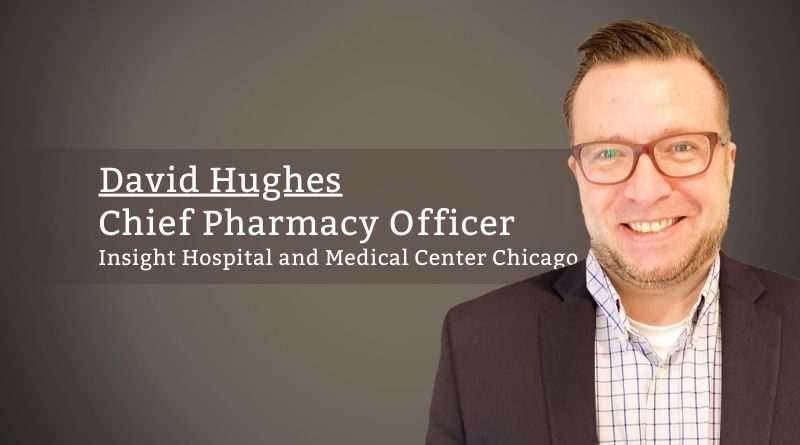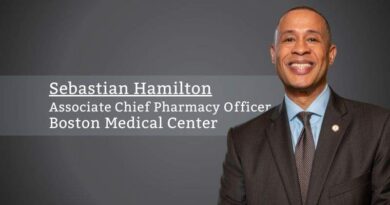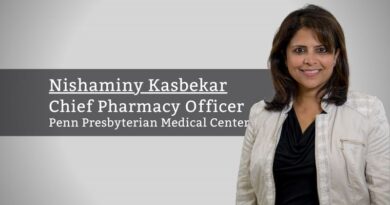Pharmacy Management Today: A view from 30,000 feet
By David Hughes, Chief Pharmacy Officer, Insight Hospital and Medical Center Chicago & Insight Surgical Hospital Michigan
Pharmacy is one of the most highly regulated professions in the US and its management is complex. Pharmacy’s impact on public health and safety is vast as the profession includes professional/clinical practice standards in addition to pharmacy facility and product standards.
There are many different types of pharmacies that vary widely in their operations. Some different types of pharmacies include community (outpatient), hospital (inpatient), specialty, nuclear, infusion, and compounding. Across all pharmacy practice settings, there are key aspects for effective management.
REGULATORY COMPLIANCE
Many federal and state laws impact pharmacy operations and professional practice, with wide variations between states. Pharmacy crosses a multitude of disciplines that are regulated – facility standards, professional standards, controlled substances, insurance billing – to name a few.
A 2019 RSAP study found that pharmacy laws had 105.8% more word count than medicine and 97.5% more word count than nursing. Pharmacy laws are amended more frequently and have more restrictions when compared to medicine and nursing.
Effective pharmacy management requires compliance with all the regulations pertaining to the practice setting. Pharmacy practice settings that perform compounding of sterile pharmaceuticals have an even higher burden of regulatory oversight as the risk to public health and safety with sterile compounding is heightened. There are significant civil and administrative penalties for noncompliance.
An oversimplification of drivers of pharmacy success is payer mix and therapy mix.
PHARMACY OPERATIONS
Pharmacy workflow process design and optimization is critical to improve efficiencies and reduce medication errors. Utilizing pharmacy technicians to conduct non-clinical tasks such as data entry, retrieval and filling of medications, compounding of medication, and transactions at point-of-sale has been demonstrated to free pharmacists for clinical operations, providing more patient-centered care. There is an ongoing paradigm shift of pharmacists practicing at the top of their education, focusing on the direct clinical care of patients and improving clinical outcomes and patient satisfaction.
Advances in technology such as robotics, pill counters, and pharmacy management systems have helped streamline workflow in pharmacies. These technologies have been shown to reduce medication errors and assist with regulatory compliance through inventory management, acceptance of e-prescriptions, customization of federal/state regulatory requirements on quantity limits, refills, prescription monitoring program (PMP) reporting, and more.
LEADERSHIP AND HUMAN CAPITAL
It is well established that any organization’s greatest asset is its employees, and this holds true in pharmacy. Aside from the general assets of education, training, intelligence, and skills a pharmacy’s employees bring to the organization, they build relationships and trust with their patients, improving patient satisfaction and clinical outcomes.
Employee engagement and overall well-being has been a top priority for most healthcare organizations since the COVID-19 pandemic. Burnout of pharmacy workers was exacerbated for a multitude of reasons, including but not limited to supply chain issues, drug shortages, increased workload, staffing shortages, and increased responsibilities.
A recent HBR article identified three ways healthcare leaders can boost employee engagement: by prioritizing patient and staff safety, building a culture of accountability, and providing proof that new practices will be worthwhile.
The impact of pharmacist turnover is not only financial, there are more important impacts on the quality of pharmaceutical care services and patient safety. Engaging with your employees and creating a strong organizational culture improves overall job satisfaction and well-being is crucial.
THE BUSINESS OF PHARMACY
Business metrics and key performance indicators (KPIs) for pharmacy operations vary between the different pharmacy types. Fixed costs and variable costs follow general business management principles of controlling labor expenses in correlation to production – prescriptions dispensed and clinical services provided. Organizations lower dispense costs through implementing technology (automation, robotics, communications, etc.) and workflow optimization. Pharmacy technician-driven models, utilize technicians to perform nonclinical tasks, lowering labor expenses, and freeing up pharmacists to focus on clinical tasks such as verification and patient care. Some states have pharmacist-to-technician ratio regulations which can affect an organization’s ability to control labor expenses through technician-driven models.
Outpatient pharmacy (community/retail, specialty, infusion) typically operate as profit centers with revenue collected for the prescription dispensed. With 95% of US prescriptions dispensed being billed to pharmacy benefit managers (PBMs), pharmacies contract with PBMs to join their networks and accept their negotiated reimbursement rates. An oversimplification of drivers of pharmacy success is payer mix and therapy mix. Payer mix refers to the percentage of commercial vs. government payers (reimbursement rates) and therapy mix refers to the different drug therapies dispensed and the availability of generic alternatives within the therapeutic class (generic alternatives and biosimilars are generally more profitable than brand name medications).
Inpatient pharmacies (hospitals) are generally treated as cost centers (expense). This is because many medical insurers reimburse hospitals on a per diem rate based on a disease-related-group (DRG) system – if a patient requires less or lower cost prescription therapy – the hospital retains more of the revenue reimbursed on their inpatient stay. An inpatient pharmacy’s financial performance has a high focus on controlling costs – drug spend. This is generally achieved through formulary and utilization management. Hospitals, through group purchasing organizations (GPOs) and directly, contract with pharmaceutical manufacturers for discounted prices on drugs. Within therapeutic categories that have multiple therapeutically equivalent alternatives, there is leverage with the manufacturers for a discounted price in exchange for including their drug on the hospital’s formulary. Additional focuses for inpatient pharmacy managers include controlling the cost to dispense in relation to financial stewardship.
This is a high-level view from 30,000 feet – there are many variables and exceptions to the above generalizations of outpatient and inpatient pharmacy including: implications of the 340b program for covered entities, hospital outpatient departments (HOPD), investigational drug services, medication therapy management (MTM) services, pharmacy administered immunizations, and the expanding clinical roles of pharmacists and growing adaptation of pharmacist provider status.



